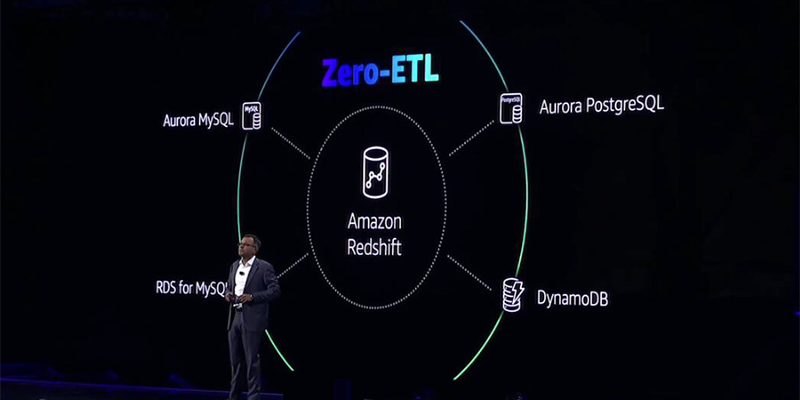In today’s digital landscape, cloud infrastructure has emerged as the fundamental building block for organizations looking to enhance their IT capabilities. As businesses continue to adopt cloud technologies, understanding the principles behind cloud infrastructure becomes crucial. This article will explore the key components, benefits, types, and future trends of cloud infrastructure to provide a comprehensive understanding of its role in modern IT environments.
What is Cloud Infrastructure?
Cloud infrastructure refers to the collection of hardware and software components that form the foundation for cloud computing services. These resources include physical servers, networking equipment, storage devices, and virtualization technologies that allow users to access computing power, storage, and networking resources over the internet.
Rather than owning and managing on-premise data centers, businesses can leverage cloud infrastructure provided by third-party cloud providers such as Amazon Web Services (AWS), Microsoft Azure, and Google Cloud Platform (GCP). Cloud infrastructure is typically delivered through a pay-as-you-go model, offering flexibility and scalability to meet fluctuating business demands.
Key Components of Cloud Infrastructure
- Computing Power
Cloud infrastructure provides virtualized computing resources through servers that process data and run applications. These virtual machines (VMs) can be created, configured, and scaled based on user needs. - Storage
Cloud storage enables businesses to store large volumes of data in a secure and accessible manner. Data can be stored across multiple locations and replicated to ensure reliability and redundancy. - Networking
Cloud infrastructure includes networking components like virtual private networks (VPNs), firewalls, and load balancers that enable secure and efficient data flow between users and cloud services. It ensures that resources are accessible over the internet or private networks. - Virtualization
Virtualization is the backbone of cloud infrastructure, enabling multiple virtual machines to run on a single physical server. This reduces hardware costs and maximizes resource utilization. Hypervisors manage the virtualized environments and allocate resources efficiently. - Data Centers
Physical data centers housing the hardware are an essential part of cloud infrastructure. These data centers, located globally, allow cloud providers to offer services with low latency and high availability.
Types of Cloud Infrastructure
There are three main types of cloud infrastructure models, each suited to different organizational needs:
- Public Cloud
Public cloud services are provided by third-party vendors and made available to the public over the internet. Examples of public cloud providers include AWS, Azure, and GCP. In a public cloud model, the infrastructure is shared among multiple customers, but security measures are in place to ensure data isolation. Public clouds offer scalability, flexibility, and cost savings since organizations only pay for the resources they use. - Private Cloud
A private cloud is a dedicated cloud environment used exclusively by a single organization. Private clouds can be hosted on-premises or by a third-party provider. This model offers enhanced control, security, and compliance, making it ideal for organizations with strict data privacy requirements. - Hybrid Cloud
Hybrid cloud infrastructure combines both public and private cloud elements, allowing organizations to balance the benefits of both models. Businesses can run sensitive workloads on a private cloud while leveraging the scalability and cost-efficiency of the public cloud for less critical tasks. Hybrid cloud infrastructure offers greater flexibility, enabling businesses to adapt to changing workloads and requirements.
Benefits of Cloud Infrastructure
- Scalability
One of the most significant advantages of cloud infrastructure is its scalability. Organizations can quickly scale up or down their computing resources based on demand without the need for significant hardware investments. This agility allows businesses to respond to growth, traffic spikes, and new projects without delay. - Cost Efficiency
With cloud infrastructure, businesses can avoid the upfront costs of purchasing and maintaining physical hardware. The pay-as-you-go model allows companies to only pay for the resources they consume, reducing waste and optimizing IT budgets. - Reliability and Redundancy
Cloud providers often operate data centers in multiple geographic locations, ensuring that services remain available even in the event of hardware failure or natural disasters. Built-in redundancy and disaster recovery capabilities offer businesses peace of mind, knowing their data and services are secure and available. - Accessibility and Collaboration
Cloud infrastructure enables remote access to computing resources from anywhere in the world. This accessibility allows employees, partners, and customers to collaborate on projects, access data, and use applications from different devices without being tied to a physical location. - Security
Leading cloud providers invest heavily in security, offering features such as encryption, multi-factor authentication, and firewalls to protect data and applications. Businesses can benefit from cutting-edge security practices and compliance certifications that meet industry regulations.
Challenges of Cloud Infrastructure
While cloud infrastructure offers many benefits, there are also challenges that organizations must address:
- Data Privacy and Compliance
Organizations that handle sensitive data must ensure that cloud providers comply with regulatory requirements such as GDPR, HIPAA, and PCI DSS. Data privacy concerns can arise when using public cloud services, as data may be stored in multiple locations, sometimes across borders. - Downtime
Although cloud providers offer high levels of uptime, no system is immune to outages. Organizations must have a contingency plan in place to ensure business continuity in the event of downtime or service disruptions. - Vendor Lock-In
Migrating workloads and data to the cloud may lead to vendor lock-in, making it challenging to switch providers or move back to on-premises infrastructure. Businesses should consider multi-cloud strategies to mitigate this risk. - Costs of Poor Resource Management
While cloud infrastructure can be cost-efficient, poor resource management can lead to unexpected costs. Organizations need to monitor usage closely and optimize resource allocation to avoid overspending.
The Future of Cloud Infrastructure
As businesses continue to innovate and embrace digital transformation, the future of cloud infrastructure looks promising. Some key trends shaping the future of cloud infrastructure include:
- Edge Computing
Edge computing involves processing data closer to the source (e.g., IoT devices) rather than relying solely on centralized cloud servers. This reduces latency, improves performance, and enables real-time processing for applications such as autonomous vehicles and smart cities. - AI and Machine Learning
Cloud providers are integrating artificial intelligence (AI) and machine learning (ML) into their services, enabling organizations to build smarter applications and automate processes. AI-driven cloud infrastructure will play a crucial role in optimizing workloads and managing resources. - Serverless Computing
Serverless computing allows developers to build and run applications without managing the underlying infrastructure. Serverless platforms automatically scale based on demand, further simplifying the development process and reducing operational overhead. - Sustainability
Cloud providers are focusing on sustainability by improving energy efficiency in data centers and using renewable energy sources. As environmental concerns grow, businesses will look to partner with providers committed to reducing their carbon footprint.
Conclusion
Cloud infrastructure is revolutionizing the way businesses manage their IT operations by offering scalable, cost-efficient, and flexible solutions. As organizations continue to adopt cloud technologies, understanding the fundamentals of cloud infrastructure is essential for optimizing performance, improving security, and driving innovation. With trends like edge computing, AI, and sustainability shaping the future, cloud infrastructure will remain at the forefront of technological advancements for years to come.

